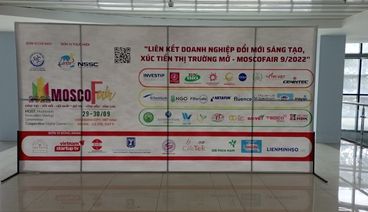WASTEWATER TREATMENT TECHNOLOGY (PART 2)
1. Conventional Activated sludge (CAS)
- CAS is a wastewater treatment technology that microorganisms in wastewater attach to suspended substances in which to colonize, reproduce and develop, and these microorganisms use the source of organic matter in water as food and decompose the organic matter to increase biomass and gradually form cotton particles called activated sludge.
- CAS is a treatment technology based on the adhesion of microorganisms to suspended solids in water. The water quality depends on the sedimentation of the activated sludge and the size of the reaction basin. The reaction process is mainly due to aerobic microorganisms in the Aeroten basin.
- Activated sludge is one of the most commonly used traditional biological treatment technologies due to its low investment cost, in the market there are many solution providers.
2. Moving Bed Biofilm Reactor (MBBR)
- MBBR (Moving Bed Biofilm Reactor) is a type of media used in wastewater treatment systems, combining the traditional anoxic or aerobic biological treatment process and the moving removable media in order to optimize the efficiency of handling contaminated components.
- The essence of the MBBR solution is the CAS / AAO / AO process, adding a mobile media. The mobile media helps increase the surface area for microorganisms to adhere, thereby significantly increasing the MLSS concentration. The higher the MLSS concentration, the smaller the area required to build the treatment system.
- MBBR wastewater treatment technology has the advantage of helping reduce the area compared to CAS and AAO technologies; produce less residual sludge than CAS activated sludge.
3. AAO processing technology
- AAO stands for the terms Anaerobic - Anoxic - Oxic. AAO technology is a continuous biological treatment process using a variety of microorganisms: Anaerobic, Anoxic and oxic Microbiota for treatment.
- AAO technology treats wastewater with microorganisms that adhere to suspended solids, similar to the Conventional activated sludge (CAS) technology. However, AAO technology is more comprehensive and improves many disadvantages of CAS technology. Reaction process based on aerobic microorganisms (Aeroten basin)
- AAO wastewater treatment technology has a low investment, produces less residual sludge and consumes less electricity than CAS activated sludge technology
4. Sequencing Batch Reactor (SBR)
- SBR (Sequencing Batch Reactor) is a biological wastewater treatment basin following a continuous batch reaction process, taking place in the same basin.
- The principle of wastewater treatment by microorganisms adheres to suspended solids such as CAS, but this process is designed to operate according to the operation cycle, each cycle consists of five steps: filling, reacting, blowing air, settling and flushing water. The time of each processing cycle depends on the design.
- Compared with AAO and CAS, SBR wastewater treatment technology has a simpler treatment process because the aerobic and sedimentation basins are merged into one basin, or the anoxic and aerobic basin merges into a single basin, so more area is saved.
In general, besides the advantages of low investment costs, traditional-biological wastewater treatment technologies have the common disadvantage of consuming area, unstable output water quality, and large amount of residual sludge generated.
Source: NGO



